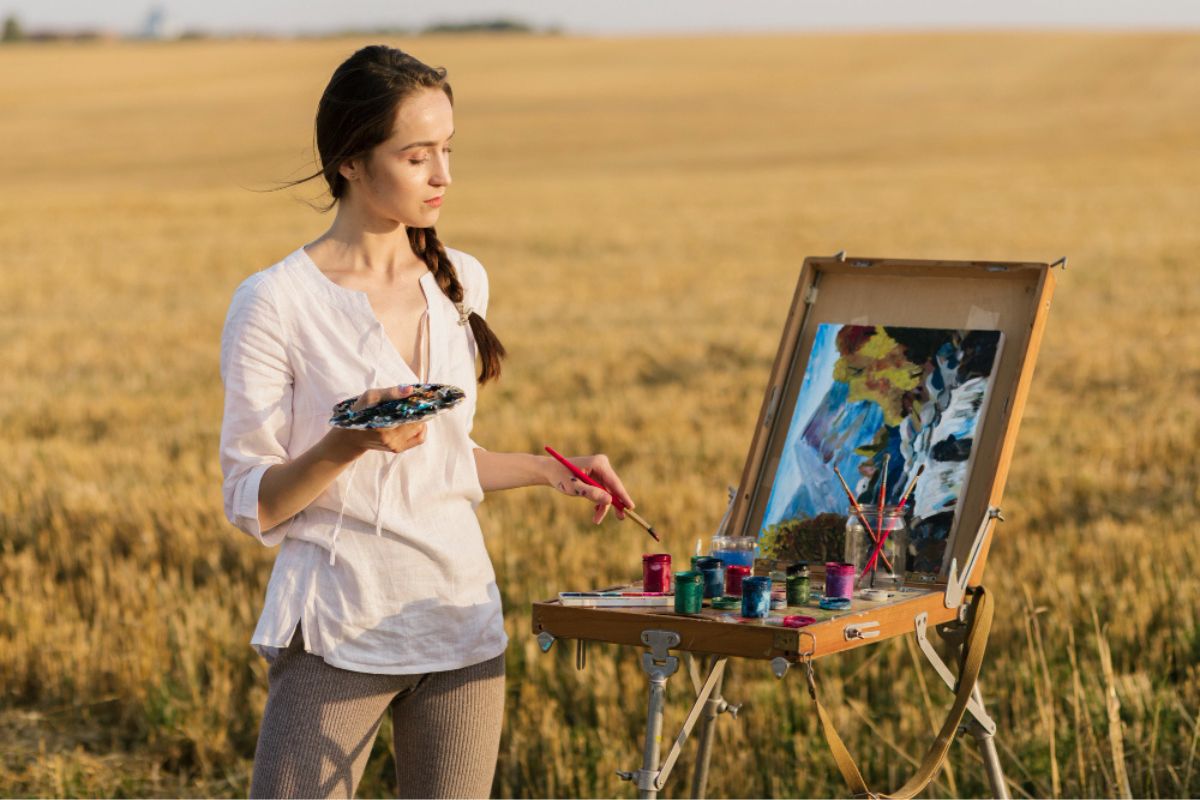Art has forever been a potent medium, a canvas where the intricacies of human emotions, cultural diversity, and societal dynamics find expression. Within the vast tapestry of Indian art, figurative paintings occupy a cherished niche. They reflect the multifaceted facets of Indian society, its rich historical tapestry, and the evolving language of artistic expression. In this blog, we embark on a captivating journey, traversing the realm of renowned figurative paintings by Indian artists.
These artworks are not merely representations of the human form; they are vessels carrying profound narratives, social commentary, and a profound connection to India’s heritage.
“Mother India” by Amrita Sher-Gil (1935):
Amrita Sher-Gil, often hailed as the “Frida Kahlo of India,” breathed life into “Mother India” as a poignant tribute to the female form.
This iconic masterpiece captures the essence of rural Indian women, portraying their indomitable strength, unwavering resilience, and innate dignity in the face of adversity. Amrita Sher-Gil’s deft use of colors and intricate detailing infuse vitality into the canvas, rendering it a pinnacle of figurative art that resonates deeply with the soul of India.
“Self-Portrait” by Raja Ravi Varma (1890):
Raja Ravi Varma, a trailblazer in modern Indian art, immortalized himself in “Self-Portrait,” showcasing his exceptional prowess in figurative paintings art. His realistic portrayal, adorned in regal attire, not only captures the physical form but also encapsulates the spirit of his era. This Figurative paintings stands as a testament to Raja Ravi Varma’s profound influence on Indian art, bridging the chasm between tradition and modernity.
“Haldi Grinders” by Tyeb Mehta (1960):
Tyeb Mehta’s “Haldi Grinders” boldly represents the daily struggles of rural Indian women. Through sharp and angular lines, Mehta accentuates the toil and tenacity of these women as they grind turmeric. The figurative aspect of this painting carries profound symbolism, emphasizing the enduring spirit of Indian women and the cultural significance of their labor.
“Ganesh Pyne” by Ganesh Pyne (1972):
Ganesh Pyne, a luminary in the realm of Indian art, is renowned for his enigmatic and dreamlike figurative works. His self-portrait, aptly titled “Ganesh Pyne,” stands as a hauntingly beautiful representation of the artist himself. Pyne’s unique style, characterized by dark tones and ethereal imagery, adds depth to this figurative masterpiece, inviting viewers into the recesses of his introspective world.
“Untitled (Couple)” by Jamini Roy (1940s):
Jamini Roy’s “Untitled (Couple)” is a testament to the artist’s fascination with folk art and his ability to distill complex subjects into minimalist yet potent forms. This painting portrays a couple in a minimalistic yet powerful style, emphasizing the essence of their relationship. Roy’s figurative works often draw inspiration from rural life and folk traditions, capturing the quintessence of everyday Indian experiences.
“The Pilgrim of the Twentieth Century” by Nandalal Bose (1930):
Nandalal Bose, a luminary of the Bengal School of Art, crafted “The Pilgrim of the Twentieth Century” as an allegorical representation of India’s quest for independence. This figurative masterpiece features a contemplative figure symbolizing the Indian people’s journey toward self-determination. The painting exudes hope and determination, encapsulating a pivotal chapter in Indian history.
“The Chess Players” by Jehangir Sabavala (1965):
Jehangir Sabavala’s “The Chess Players” is a stunning exemplar of figurative art, seamlessly melding traditional Indian motifs with modernist techniques. This painting portrays two individuals engrossed in a game of chess, symbolizing the intricate strategies and decisions that shape human interactions. Sabavala’s adept use of light and color adds depth to the figurative narrative, rendering it a visually captivating masterpiece.
Bride’s Toilet” by Raja Ravi Varma (c. 1893):
Raja Ravi Varma is often considered one of the pioneers of Indian modern art. “Bride’s Toilet” is one of his iconic works, known for its detailed and realistic portrayal of a woman getting ready for her wedding.
Self Portrait” by Amrita Sher-Gil (c. 1930):
Amrita Sher-Gil is one of India’s most celebrated female artists. Her self-portrait is a powerful and introspective work that captures her intense gaze and reflects her deep connection with her subjects.
Mother India” by MF Husain (1955):
Maqbool Fida Husain, often referred to as MF Husain, is known for his vibrant and expressive style. “Mother India” is a famous painting depicting the country as a nurturing mother figure.
“The Injured Ashwatthama” by K.K. Hebbar (1975):
K.K. Hebbar’s painting “The Injured Ashwatthama” is a striking representation of a wounded Ashwatthama, a character from the Indian epic Mahabharata. The painting is known for its emotional depth and symbolism.
“Bapu” by Satish Gujral (1989):
Satish Gujral’s portrait of Mahatma Gandhi, titled “Bapu,” is a powerful representation of the Father of the Nation. It captures Gandhi’s serene and determined expression.
Conclusion
Renowned figurative paintings by Indian artists serve as gateways into the multifaceted fabric of Indian culture, history, and the human experience. Each of these masterpieces, born from the creative genius of artists who have made an enduring impact on the art world, presents a distinct viewpoint on the human form and its profound connection to India’s opulent heritage.
With their expert command of color, form, and storytelling, these artists have breathed life into canvases, inviting viewers to ponder the intricacies and richness of the human condition within India’s vibrant cultural mosaic.
Tags: figurative artFigurative Paintings


nice to read this post